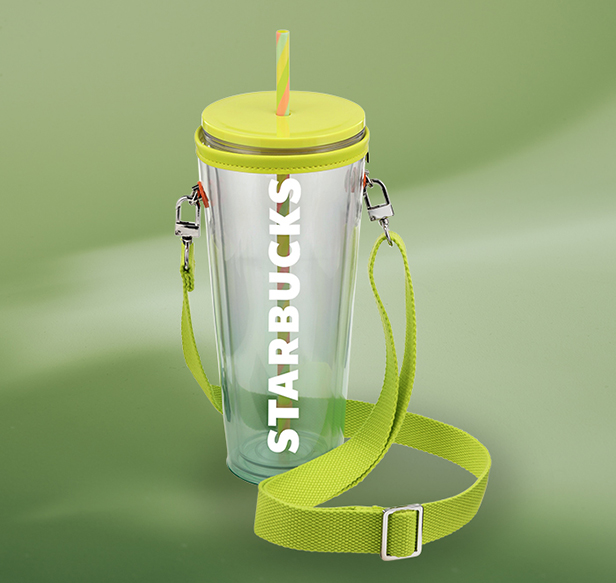Starbucks Summer 2025 Collection May Signal Shift to Smaller Stylish Drinkware
In addition to sunny colors, the coffee chain’s seasonal drop focuses more on carrying and customization than volume.
Could the days of 40 oz. tumbler dominance be behind us?
If Starbucks’ summer drinkware collection is any indication, consumers might be looking for more manageable drinkware options – especially when on the go.
The Starbucks seasonal drinkware collection is typically a good look into what sort of designs end-users want for things like tumblers, cups and bottles. The colors reflect the season, with the summer collection full of bright yellows, blues and greens. But what stands out the most in the collection is the relatively small size of all the pieces.
Recently, 40 oz. tumblers inspired by the “Stanley Cup” were all the rage, and drinkware suppliers created their own answers to the piece after it became a social media sensation. Now, however, Starbucks is betting on end-users looking at smaller drinkware pieces – and also accessories for them.
Take, for example, the Cold Cup & Carry Case from this collection. It’s only 24 oz., and it comes with a carrying case and strap that matches the lid of the cup. This bridges the gap between tote bag and water bottle, creating another opportunity for branding with the carrying strap and bag.

The Vibrant Yellow Cold Cup & Carry Case (24 oz.) from Starbucks
Elsewhere in the collection, there’s a 24 oz. cold cup with a flower charm that fits around the straw. The idea of a drinkware accessory is something that makes sense for a 40 oz. tumbler, where you can attach a “tumbler backpack” for carrying small items. But the charm idea creates an opportunity for end-users to collect or trade their charms like they might do with trading cards or even other accessories of this ilk. Look at the "Labubu" collectibles that are currently all the rage for people to put on their purses and bags. (The idea of merchandise specifically for the Labubu dolls is a topic for another day.)
It’s simple, but something like that adds a layer of branding and creates engagement among end-users, and possibly even additional business if the customers can go back to get different varieties.

Swirl Cold Cup with Flower Charm (24 oz.) from Starbucks
Whether the Stanley Cup era is truly over remains to be seen, but some suppliers and distributors have predicted that the tariff situation could make it difficult, or at least not as cost-effective as other drinkware choices.
The change could also just be that trends are cyclical, and end-users fluctuate between two ends of product spectrums. Baggy pants give way to skinny jeans, and then we go back to baggy. Hard goods are not exempt to these swings in consumer trends. At one point, everyone wanted their cell phone to be as small as possible, and then smartphone manufacturers offered products that double as tablets.
The drinkware got bigger, and now it might get smaller when end-users want something easier to carry.